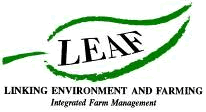
Worms and all!
with Jeremy Padfield
We raise beef and grow cereal crops such as wheat, barley, oil seed rape and beans on our farm in the Somerset village of Stratton-on-the-Fosse. The grass that our cows eat is so important and on this visit we encourage visitors to learn about the soil: how farmers and nature care for it together. Children of all abilities really love this visit, especially getting dirty! When we have time, getting the visitors to make their own wormery brings the whole visit to life and is a great way of helping them make the link between the soil where we grow food and the soil that they see all around them – in parks and their own back gardens – as well as giving them a fantastic going home present!
Not just dirt
From the beginning we have different buckets of soil available for the group to put their hands in and we can talk about what they are experiencing, what it looks, feels and smells like. Is it gritty, soft, silky, floury or sticky? Does it smell? Is it warm or cold?
When we are discussing the soil, I always try to ask questions to see if they have experience of gardening or growing things at school or at home. I encourage them to explore for themselves rather than just telling them lots of information. We have some magnifying glasses and bug magnifying boxes so they can explore the dirt more closely, looking for stones, bits of decaying plants, seeds or even tiny mini beasts. These tools let them discover what is in the soil rather than me telling them.
Hands going through topsoil.
I make sure that at least one of the buckets has a healthy worm population. There are sometimes a few squeals, but the worms are so important for good soil and getting hands on with them helps make the visit memorable. There is so much to explore about the soil but by the time everyone has got their hands dirty and handled a few worms, I find the questions come quite easily. We talk about how the worms make tunnels that let air and water into the soil, the other creatures that live in soil as well as the worms, and the dead plants and animals – and of course poo – that helps keep the soil rich and fertile.
Getting outside
To get the whole picture, I take the group outside to a freshly ploughed field because good soil is vital for growing our crops as well as feeding our cows. I leave my tractor and plough in the field because I have found that some of our visitors are fascinated by the machines more than anything, especially some of the young lads. This is where we talk about what farmers do to help keep the soil healthy, such as the ploughing and about fertilisers and why you need to use them. We then head back to the barn and let them take a piece of our farm home with them by making their own wormery!
Adapting our visit
This visit has something for everyone, such as the smell of freshly dug or ploughed soil, the feel of the soil and the slimy worms, however you should check with the group representative that handling soil and worms and getting your hands dirty is going to be something the visitors will enjoy. Accessing a ploughed field may be difficult for some visitors with mobility impairments and so we focus the visit on areas that are accessible for the hands-on activities or for exploring the machinery, and we try to use a field which people can at least get close to for the bigger picture. If necessary, this visit still has a lot to offer visitors without visiting the field itself.
The smell of freshly dug soil will often trigger strong memories in people of all ages.

